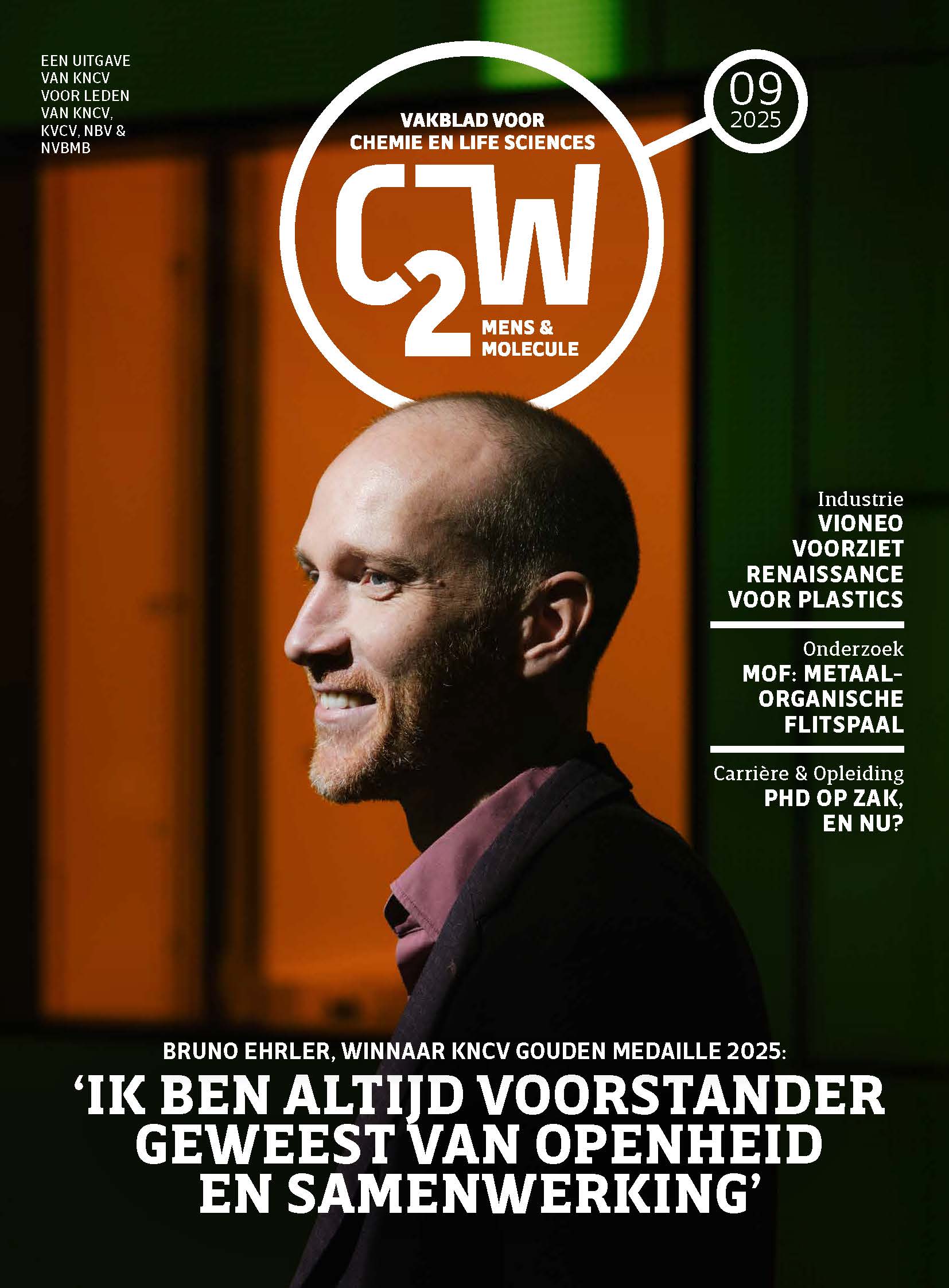Would you like to add an event to this list? Simply register your event using this form.
Synthesis and optimization of NF/RO membranes for food and beverage industry

3000 Leuven, België
Promovendus/a: Peter Van den Mooter
Promotor(en): Prof. dr. ir. Ivo Vankelecom
Membrane technology is a technique able to separate specific components from a bulk feed by using membranes. These so-called membranes can be seen as a barrier that can separate ions or molecules from each other by letting specific components pass while retaining others. They can be compared to coffee filters which hold the coffee ground but let the liquid coffee pass through. A similar process can be observed in synthetic or polymeric membranes but at a much smaller scale and with much smaller pores. To achieve separation on this level, an extra ‘push’ is needed such as applying pressure. The components that are retained (e.g. the coffee ground) are called ‘retentate’ while the components that pass through (e.g. the liquid coffee) are called ‘permeate’. To describe the performance of membranes, two terms are often used: permeance and retention. Permeance is used to describe the volume of the permeate that passes through the membrane per membrane area, pressure and time. Retention is used to describe the percentage of ions or molecules that are preferably retained by the membrane. Thus, a high permeance means that a lot of permeate can pass through the membrane, and a high retention means that a lot of retentate is retained (high selectivity). Hence, a high permeance as well as high retention are preferred.
Membrane technology is a more recent technology for separation processes and interesting because it requires less energy than other separation processes such as distillation. Therefore, membranes have a lot of applications in several industries such as the water treatment, pharmaceutical industry and food & beverage industry. Especially beer brewing industry is very keen in using membrane separation processes in several steps of the beer production. These filtration techniques could be combined or even replace some traditional (time- and energy-consuming) techniques.
During the beer fermentation process, different flavor components are created which make up the complete flavor profile of the beer. Two of the most important flavor-active esters in beer are ethyl acetate (solvent-like aroma) and isoamyl acetate (fruity, banana aroma). However, once the concentration of these exceeds its threshold value, they have a dramatic effect on beer flavor. Making it an unpleasant experience for the consumer.
In this thesis, an attempt was made to create membranes that are able to decrease the concentration of these esters while maintaining the alcohol level in the beer. In order to make such membranes, different parameters during the membrane synthesis need to be controlled. Making it a very complex, waste- and time consuming synthesis method. However, a novel optimization approach using algorithms and rapid screening experiments has been developed. With this strategy, it is now possible to efficiently optimize membranes towards the desired performance.
Different classes of membranes were prepared to obtain the desired separation performance during beer filtration. A first class are the asymmetric cellulose tri-acetate (CTA) membranes. This membrane type is created via a synthesis method known as non-solvent induced phase separation (NIPS). Herein, a homogeneous solution of CTA is cast on a substrate and subsequently immersed in a non-solvent bath. Upon immersion, the non-solvent ‘pushes out’ the solvent and makes it possible for the polymer CTA to solidify again in a structure with a specific porosity. During this process, the most critical parameters that influence the final structure are optimized using the above mentioned novel optimization strategy.
However, the chemical stability in beer of these CTA membranes was questioned and therefore, another class of membranes, the so-called ‘thin film composite’ (TFC) membranes were studied. As the name suggests, these are membranes with a thin film on top (i.e. top-layer) of an asymmetric polymeric support. The top-layer is obtained by reaction between 2 different types of molecules (reactants) which are both dissolved in a different phase, i.e. an aqueous phase and an organic phase. TFC membranes are widely researched because they (i) can be optimized towards an increased chemical stability and (ii) have a high selectivity combined with a rather high permeance due to the thin film. In this work, another type of organic solvent is used, namely ionic liquids (ILs). ILs are a kind of salts that are liquid at room temperature and can have a positive effect on the membrane performance. Different parameters for the synthesis of the membrane (with this IL) were varied and investigated. Relative good membrane retentions were obtained but the exact mechanism responsible for this performance is still complex and needs further research.
Finally, one of the supports used during TFC membrane synthesis was polysulfone (PSf). However, the chemical stability of this polymer during the synthesis procedure was an issue. Therefore, a more chemically stable PSf/polyacrylate support was obtained by cross-linking it via photo-irradiation (UV-LED). Future studies can be conducted with the use of this PSf/polyacrylate support as an universal support during TFC membrane synthesis and subsequently test it performance during beer filtration experiments.
All Dates
- 2021-05-11 17:00
Powered by iCagenda

